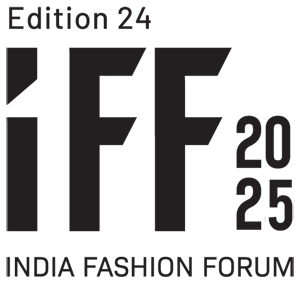With the growing acceptance of denim, there is wider availability of denim products and a much larger number of brands in this segment. Not only are there many more primarily denim brands available, but brands that are not rooted in denim have also caught on to the opportunity and have included denim as part of their offering.
Denim has evolved from rugged casualwear to products appropriate for all kinds of occasions today. You can dine in them at a swish restaurant, wear them to work, or for a book or film launch. Denim jeans are accepted today as a versatile garment. And with denim’s growing acceptability globally, the Indian market has evolved in step. This also reflects casualisation of culture in general. Occasions which were considered strictly formal – business meetings, significant social gatherings, club evenings – are becoming less uptight both in terms of attire and the atmospheric setting. While this has led to growth in the wardrobe share of denims, there is also growth in its acceptance across different age groups, genders, income groups and city type. A significant driver and beneficiary of this growth is the womenswear segement.
 Denim is a flexible option for young women who are stepping out to study or to work, suited not only to westernwear but also to fusion with Indian kurtis. The growing availability and variety of the product fuelled by international brands is also leading to the growing acceptability of denim by women. Indian brands like Numero Uno, which for a long time focused only on menswear from its inception in 1987, today has almost 15 percent of its revenue coming from the women’s segment. Killer followed a similar pattern in terms of its product line segmentation for men and women.
Denim is a flexible option for young women who are stepping out to study or to work, suited not only to westernwear but also to fusion with Indian kurtis. The growing availability and variety of the product fuelled by international brands is also leading to the growing acceptability of denim by women. Indian brands like Numero Uno, which for a long time focused only on menswear from its inception in 1987, today has almost 15 percent of its revenue coming from the women’s segment. Killer followed a similar pattern in terms of its product line segmentation for men and women.
This shift towards denim is not only a bid for Indian brands to expand their footprint, but visible among international brands as well. Besides core denim players like Levi Strauss, Pepe, Wrangler, and Calvin Klein Jeans growing their presence, many other fashion brands like Benetton, Zara and Forever 21 have denims to complete their range of bottoms. Even brands such as Van Heusen, Allen Solly, Arrow and Louis Philippe, which started with only formal apparel and accessories as their product offering, have now included denim in their casualwear portfolio.
Depicted are some major international fashion brands offering jeans as a part of their product portfolio, which have been present in the market from before 2000 and the ones which entered and have been around ever since. Most of these brands forayed into the Indian market post 2006, when the FDI policy was opened up to 51 percent for single- brand retail.By our estimation of the International apparel brands present in India, more than one-third of them have denims in their product offering.
 Other than distributed brands, Indian retailers are also dipping into the indigo river with their private labels. For instance, Shoppers Stop and Pantaloons have I-Jeanswear and Bare denim respectively as their private labels for casual bottoms, while e-retailer Myntra has Roadster and HRX as its denim private labels.
Other than distributed brands, Indian retailers are also dipping into the indigo river with their private labels. For instance, Shoppers Stop and Pantaloons have I-Jeanswear and Bare denim respectively as their private labels for casual bottoms, while e-retailer Myntra has Roadster and HRX as its denim private labels.
Not only is there an immensely growing number of brands for this product in the mid-premium and premium segment, there is increasingly differentiation emerging in the product itself, adapting to the numerous wear occasions, making denim even more versatile. Levi Strauss, Calvin Klein and Tommy Hilfiger are expressions of the American casual look, while Zara, United Colors of Benetton, and French Connection denims highlight distinct elements of European fashionability. A Van Heusen or Arrow denim has a restrained look in keeping with the original brand DNA, while GAS amalgamates both an Italian fashion flavour and function in its products.
However, brands belonging to the premium and mid-premium segment together are estimated to contribute approximately 30 percent to the market share while the majority still comprises brands in the economy segment and the unbranded market.
While pricing in the premium and mid-premium segment is higher and product margins may be healthier, it is evident that the competition for brand visibility is fierce in the higher priced segments. On the other hand, brand strength and identity for brands in the economy segment are remarkably low. Since price and availability are the key driving factors for these brands, they face a challenge in acquiring a base of consumers that adheres to the brand.
 Given the significant shifts in population, income and lifestyles, it is time for brands to relook the value proposition they are presenting to a rapidly changing consumer base, and to redefine the width and depth of their product and brand basket appropriately.
Given the significant shifts in population, income and lifestyles, it is time for brands to relook the value proposition they are presenting to a rapidly changing consumer base, and to redefine the width and depth of their product and brand basket appropriately.
There are challenges as well as opportunities for new and existing players in all segments, and they can both contribute to and be beneficiaries of the wider acceptability of denim as a versatile garment by building brands that focus on the consumer’s aspirations.



